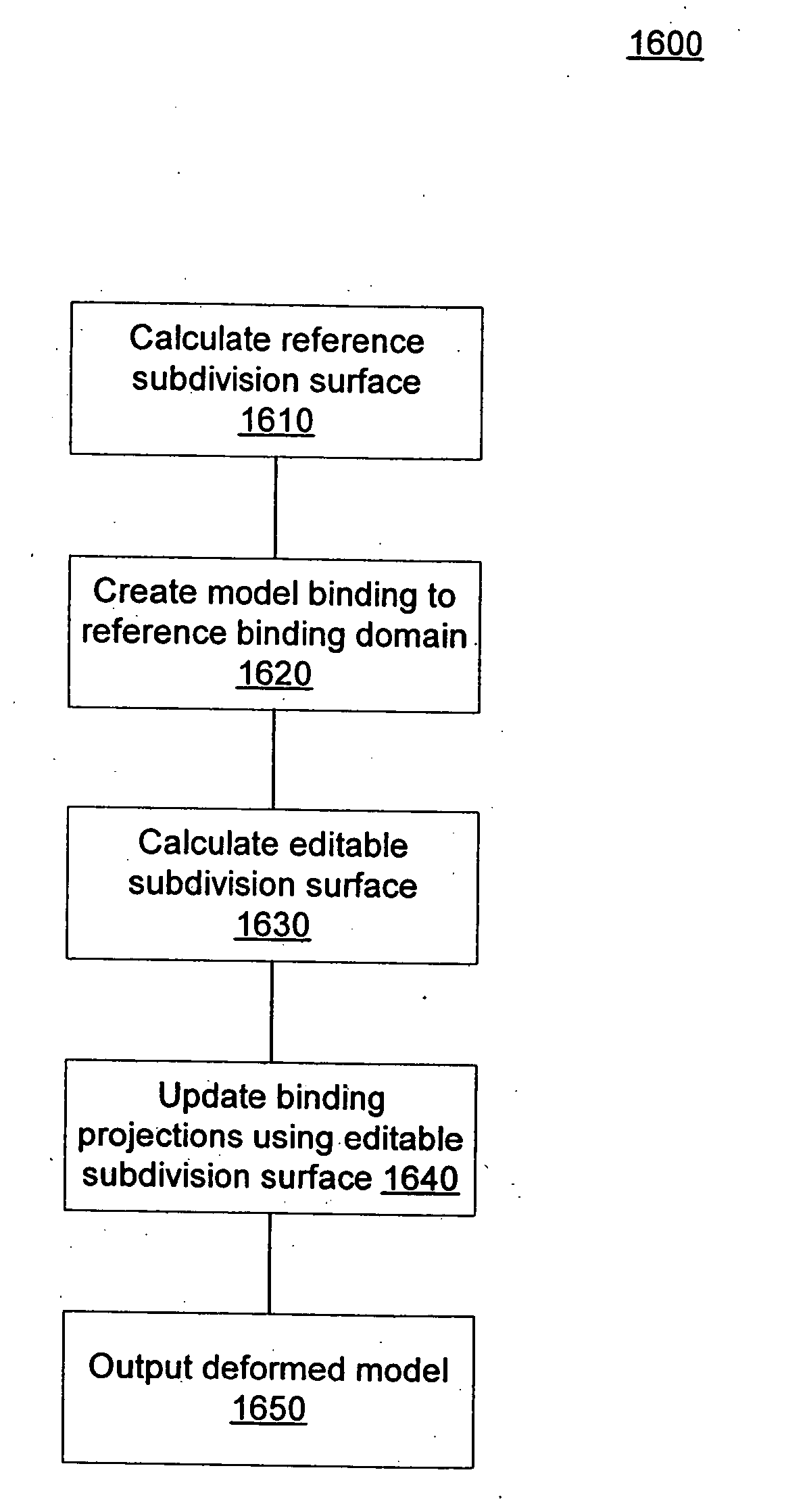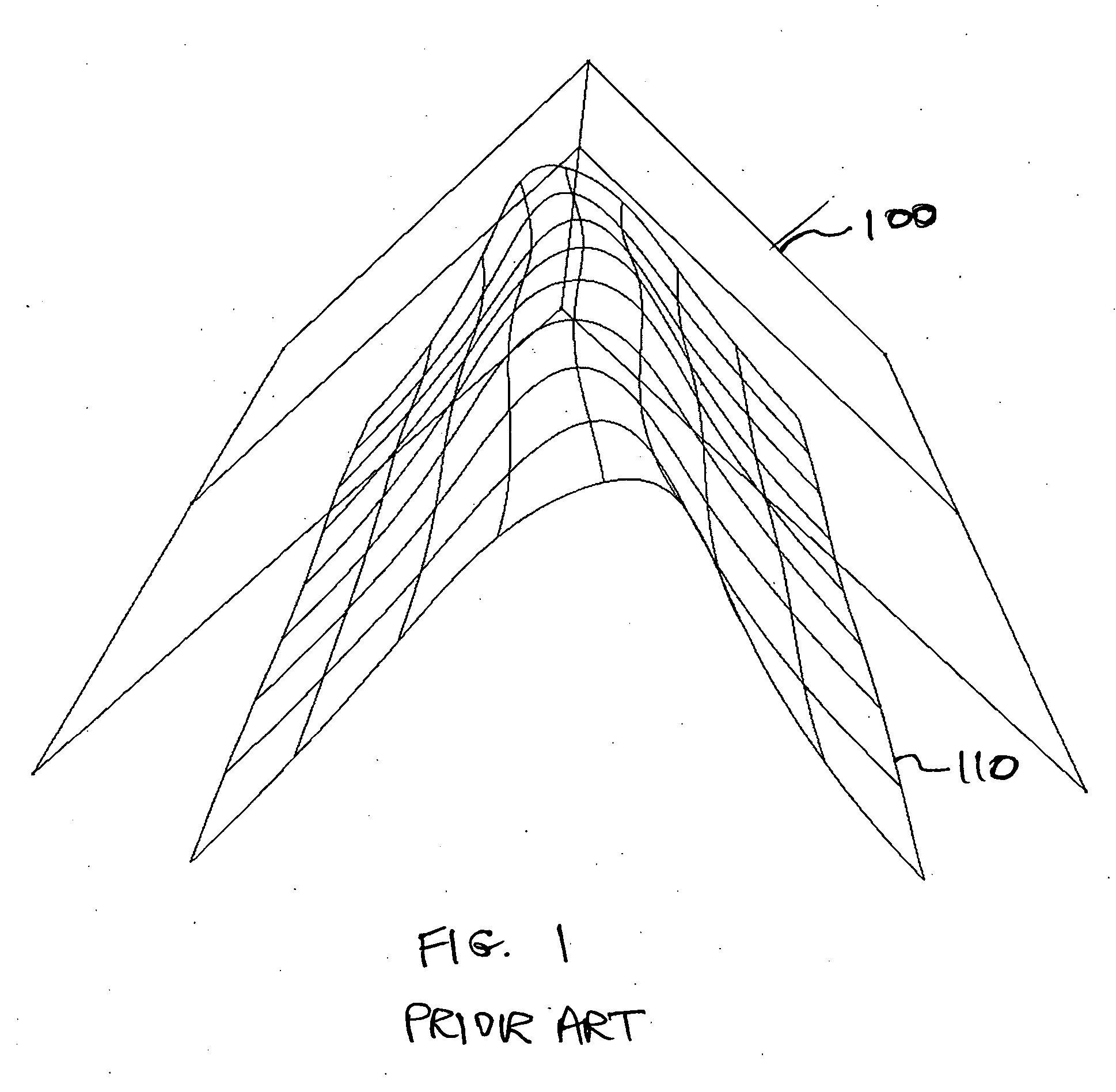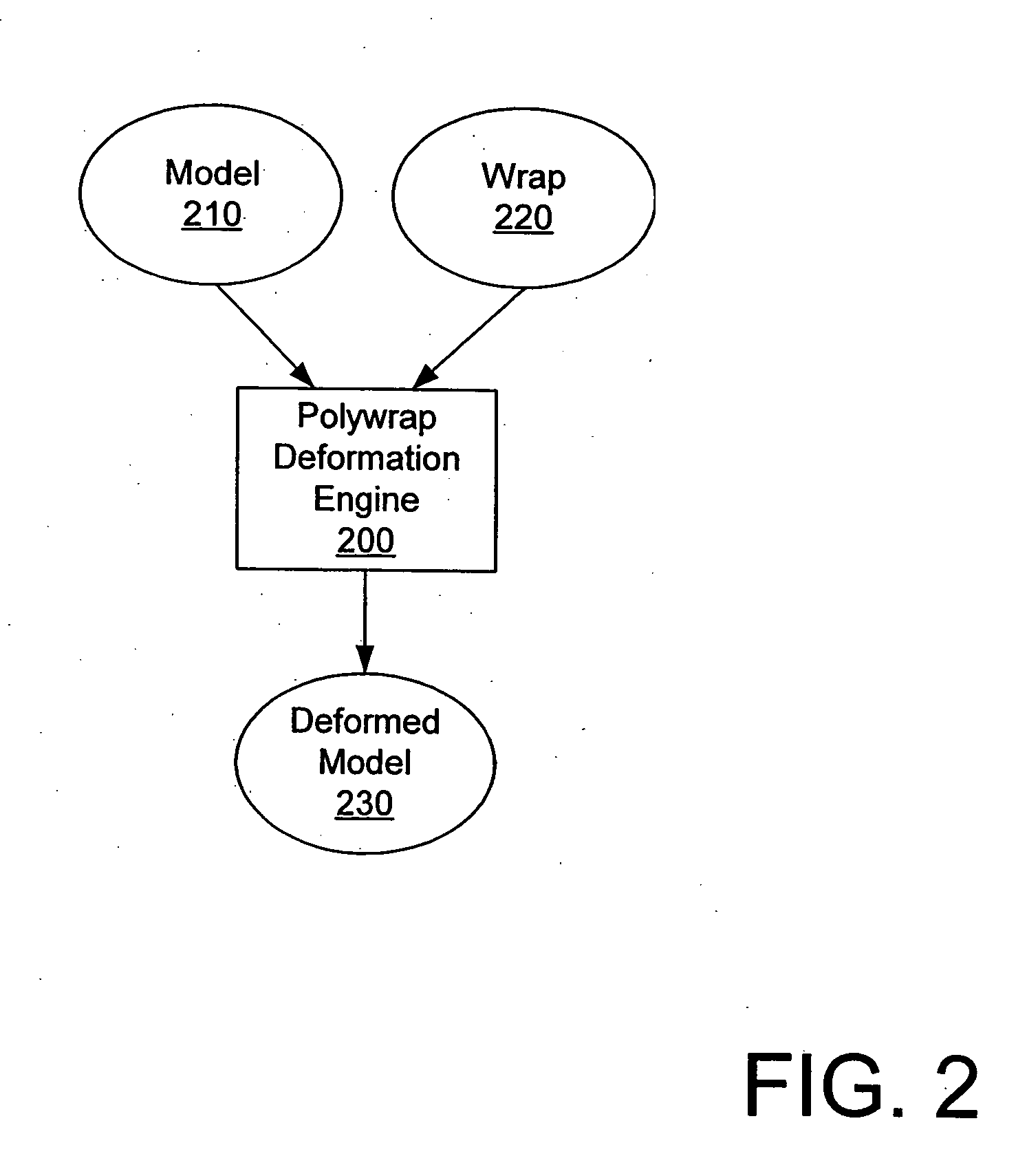Wrap deformation using subdivision surfaces
a technology of subdivision surfaces and wrapping, applied in the field of computer graphics, can solve the problems of time-consuming and inconvenient, moving a large number of cvs directly, moving a large number of cvs, and requiring a lot of time and effort on the part of users,
- Summary
- Abstract
- Description
- Claims
- Application Information
AI Technical Summary
Benefits of technology
Problems solved by technology
Method used
Image
Examples
Embodiment Construction
[0036]FIG. 2 illustrates a block diagram overview of the use of one embodiment of a software component for wrap deforming a model. FIG. 2 includes a polywrap deformation engine 200, a model 210, a wrap 220, and a deformed model 230. Polywrap deformation engine 200 is a software component used to wrap deform a model 210. The inputs of the deformation engine 200 are a model 210 and a wrap 220. The output of the deformation engine 200 is a deformed model 230. After a user is satisfied with the deformed model 230, the deformed model 230 is further processed in order to add special effects such as lighting and shadows. For example, the deformed model 230 may be input into a rendering engine (not shown).
[0037] One of the inputs to polywrap deformation engine 200 is a model 210. The model 210 is the figure that will be deformed. The model 210 may be built using a variety of methods known to those skilled in the art, such as scanning in a three-dimensional sculpture or creating a model fro...
PUM
 Login to View More
Login to View More Abstract
Description
Claims
Application Information
 Login to View More
Login to View More - R&D
- Intellectual Property
- Life Sciences
- Materials
- Tech Scout
- Unparalleled Data Quality
- Higher Quality Content
- 60% Fewer Hallucinations
Browse by: Latest US Patents, China's latest patents, Technical Efficacy Thesaurus, Application Domain, Technology Topic, Popular Technical Reports.
© 2025 PatSnap. All rights reserved.Legal|Privacy policy|Modern Slavery Act Transparency Statement|Sitemap|About US| Contact US: help@patsnap.com



